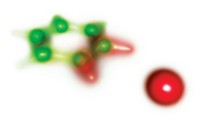Advertisement
Grab your lab coat. Let's get started
Welcome!
Welcome!
Create an account below to get 6 C&EN articles per month, receive newsletters and more - all free.
It seems this is your first time logging in online. Please enter the following information to continue.
As an ACS member you automatically get access to this site. All we need is few more details to create your reading experience.
Not you? Sign in with a different account.
Not you? Sign in with a different account.
ERROR 1
ERROR 1
ERROR 2
ERROR 2
ERROR 2
ERROR 2
ERROR 2
Password and Confirm password must match.
If you have an ACS member number, please enter it here so we can link this account to your membership. (optional)
ERROR 2
ACS values your privacy. By submitting your information, you are gaining access to C&EN and subscribing to our weekly newsletter. We use the information you provide to make your reading experience better, and we will never sell your data to third party members.
Environment
ACS Meeting News: Chemistry and computer coding brought together in NSF-funded institute
by Elizabeth Wilson
April 6, 2017

Credit: Matthew Harrigan & Vijay Pande
A new computational chemistry software institute, the first of its kind funded by the National Science Foundation, aims to bring software development in the field up to speed with rapid advances in computer hardware.
The Molecular Sciences Software Institute (MolSSI), based at Virginia Tech, celebrated its launch with a reception on Tuesday at the American Chemical Society national meeting in San Francisco.
With a five-year budget of nearly $19.2 million per year, MolSSI is assembling a staff of research scientists, including coding experts, chemists, and mathematicians. They’ll occupy about 640 square meters at Virginia Tech, MolSSI director and Virginia Tech chemistry professor T. Daniel Crawford told C&EN.
The advanced software code that results from this project will be open source, Crawford said. “What we’re trying to do is develop frameworks and infrastructures that the whole community can use.”
The need for such a research effort has long been apparent, Crawford explained. The software that is used to model structures, examine molecular dynamics, and predict reaction outcomes has lagged behind advancements in computer hardware by about 10 years.
“I realized our community was really facing a crisis in that our software development was not keeping up with the massive changes in hardware,” he said.
Crawford and his colleagues approached NSF in 2010 with the idea for an institute to close this gap. After seven years of workshops and talks, NSF agreed to support the project. Unlike most projects that NSF funds, Crawford explained, the agency will work closely with MolSSI to help the project succeed.
MolSSI will serve as a model for the possible development of these types of institutes in other fields, Evelyn Goldfield, program director for NSF’s Division of Chemistry said at the launch celebration. “We are the guinea pigs,” she said.
In addition to funding the research science staff, MolSSI is awarding fellowships to young researchers in computational chemistry. At the reception, Crawford announced the first 10 recipients, culled from 54 applicants. They’ll be funded for two years, working in research groups around the country.
Teresa Head-Gordon, a member of MolSSI’s board of directors, said one of her projects will be to create a master’s program in software engineering and molecular science at the University of California, Berkeley, where she is also a chemistry professor.
MolSSI will also be holding workshops. For instance, a workshop at the Asilomar Conference Center in Pacific Grove, Calif., next month will focus on quantum chemistry software packages.
The institute hopes it will be able to extend its funding from the initial five years, eventually to 10 years.
“The long-term sustainability is a major issue for us,” Crawford said. “It’s essential that the time horizon be well beyond that.”
Related stories:





Join the conversation
Contact the reporter
Submit a Letter to the Editor for publication
Engage with us on Twitter